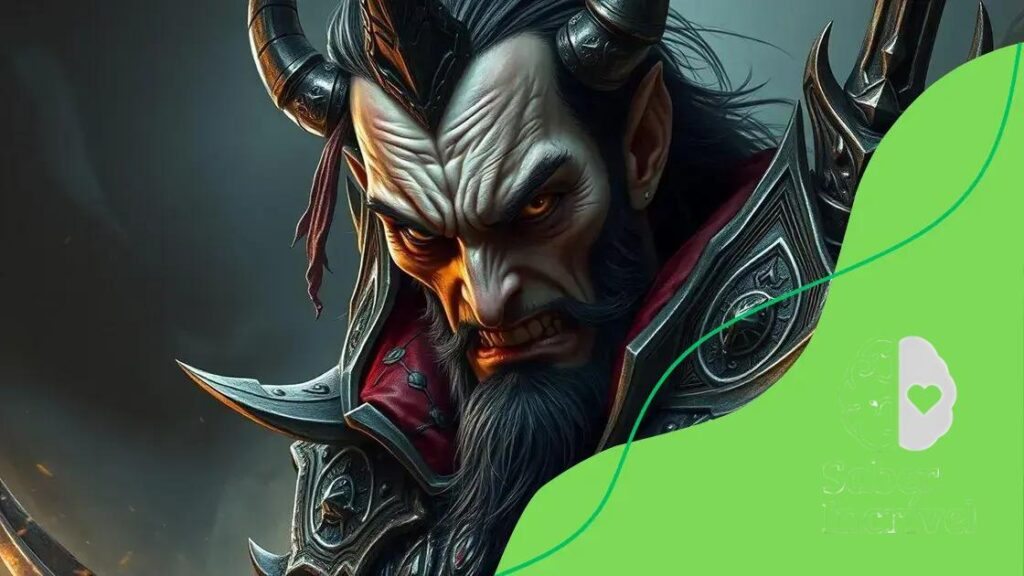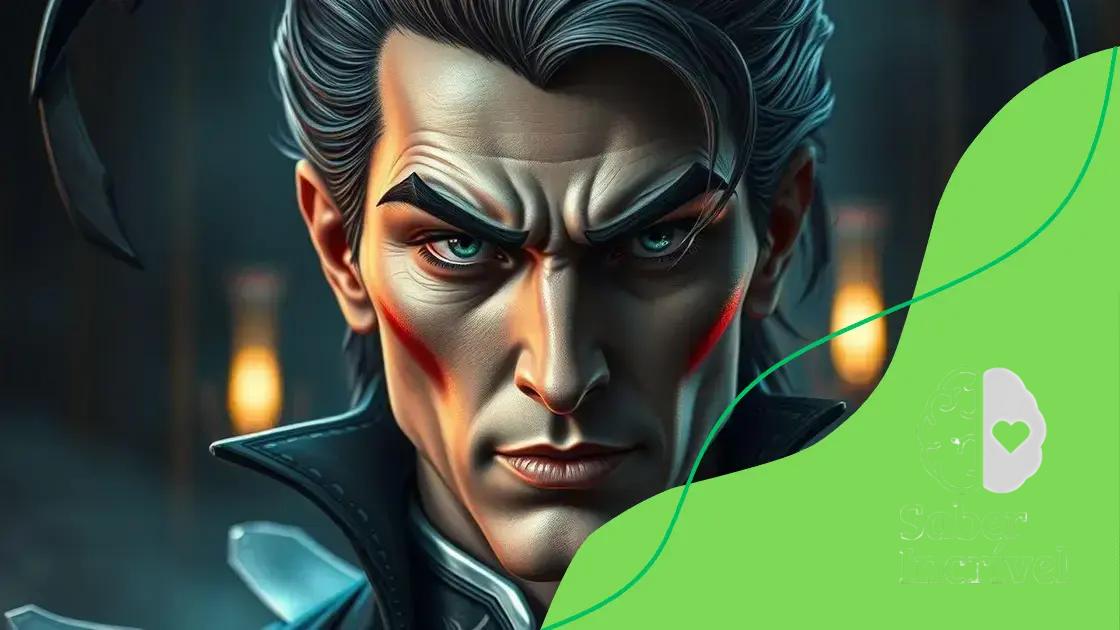When the villain steals the spotlight: queen of tears edition

Creating memorable villains that resonate involves clear motives, layered personalities, and emotional depth, allowing them to challenge heroes while embodying themes that connect with audiences.
When the villain steals the spotlight: queen of tears edition highlights the magnetic appeal of antagonists in stories. Have you ever found yourself rooting for the bad guy? Let’s dive into why these characters often captivate our imagination.
Understanding the role of villains in storytelling
Understanding the role of villains in storytelling is crucial for creating compelling narratives. Villains often serve as the primary antagonists, challenging the heroes and driving the plot forward. Their motives can range from revenge to greed, adding complexity and excitement to the story.
The significance of conflict
Without a strong villain, stories may lack the necessary tension and conflict. These characters push heroes to their limits, testing their strength, resolve, and moral compass.
Villains as reflections of society
Often, villains embody the darker aspects of human nature or societal issues. They can make us question our values and beliefs, providing deeper insights into the human experience.
- Exploring themes of power and corruption
- Highlighting fears and insecurities
- Creating relatable motives that resonate
Moreover, villains can evoke empathy, making them more relatable. By showcasing their backstories, we understand their choices, creating a rich tapestry that enhances the narrative. Characters like Loki from Marvel or Darth Vader from Star Wars exemplify this complex relationship between good and evil.
In many stories, the best villains are not just evil for the sake of being evil. Their intentions might stem from genuine desires or traumatic pasts. This depth makes them memorable and intriguing, allowing readers to connect with them on various levels.
How villains enhance character development
Villains play a vital role in how characters develop throughout a story. Their actions often bring out the best—or the worst—in heroic characters, allowing for significant growth and transformation.
The driving force for heroes
In many narratives, heroes face formidable villains that challenge their morals and beliefs. This confrontation forces them to make tough decisions and reflect on their values. For instance, a hero might start as naive but grows wiser and stronger after facing a clever enemy.
Creating contrasting personalities
The presence of a well-crafted villain helps to highlight the virtues of the hero. Their differing motivations showcase the spectrum of human experience, making the hero’s journey more compelling. The stark contrast between good and evil keeps readers engaged and invested in the outcome.
- Villains push heroes to confront their fears
- Enemies reveal hidden strengths and weaknesses
- Conflict with villains leads to profound personal growth
A villain’s influence can lead to unexpected alliances or deep-seated rivalries. This complexity adds layers to character relationships, enhancing emotional depth. Characters may evolve in response to a villain’s cunning tactics or relentless pursuit, leading to moments of bravery.
Furthermore, villains often mirror the inner struggles of heroes, presenting a tangible representation of what the hero might become if they lose their way. This dynamic creates a rich narrative tapestry, demonstrating how essential villains are to character arcs.
The psychology behind villainous charm

The psychology behind villainous charm reveals why we are often drawn to these complex characters. Their charisma and depth make them fascinating, allowing them to steal the spotlight in various narratives.
The allure of the villain
Villains often possess an irresistible allure, characterized by confidence and sophistication. This magnetic appeal makes them captivating to audiences, and we find ourselves intrigued and sometimes rooting for them. A villain with charm can even overshadow the hero, prompting us to question our allegiance.
Understanding their motives
The charm of villains is often rooted in their motives and desires. They usually have a clear purpose, whether it’s revenge, power, or love. This clarity creates a relatable aspect that resonates with audiences, making them more sympathetic.
- Villains highlight human flaws and struggles
- Their backstories often evoke empathy
- Complex emotions make them more relatable
Moreover, a charming villain often embodies traits we secretly admire. Their audacity and willingness to defy rules can be appealing. This complexity challenges us to consider the gray areas of morality, as we see ourselves in both heroes and villains.
Additionally, the psychological concept of the “dark triad”—narcissism, Machiavellianism, and psychopathy—often plays a role in a villain’s charm. These traits can make them seem powerful and compelling, drawing others toward them despite their questionable actions. As we delve into these characters’ minds, we uncover layers that explain their choices and charisma.
Key examples in literature and film
Key examples in literature and film showcase how villains can elevate a story. These characters often embody the struggle between good and evil, captivating audiences and leaving lasting impressions.
Literature’s iconic villains
In literature, characters like Iago from Shakespeare’s “Othello” demonstrate the power of manipulation and betrayal. Iago’s cunning and personal motivations create intrigue, making him a classic antagonist. Another example is Voldemort from the “Harry Potter” series. His quest for immortality and domination provides a formidable challenge for the hero, Harry. These villains not only drive the plot but also reveal the complexities of human nature.
Memorable film antagonists
In film, Hannibal Lecter from “The Silence of the Lambs” captivates audiences with his intelligence and charm. His psychological games not only make him terrifying but also deeply fascinating. Similarly, the Joker in Christopher Nolan’s “The Dark Knight” challenges Batman’s ideologies, showcasing chaos versus order. These characters are unforgettable due to their multi-dimensional personalities and motives.
- Complex backstories that evoke sympathy
- Charm mixed with a dark agenda
- Conflicts that resonate with broader themes
Villains like these demonstrate that a strong antagonist is crucial for impactful storytelling. They serve as mirrors to heroes, highlighting the traits that make the protagonist relatable. Each villain adds depth and richness, making the narrative more engaging and thought-provoking.
Creating memorable villains that resonate
Creating memorable villains that resonate with audiences involves crafting characters with depth and complexity. These characters should challenge heroes while also evoking empathy, making them unforgettable.
Defining clear motives
A strong villain must have clear and relatable motives. When audiences understand why the villain acts as they do, it adds depth to the character. For example, a villain driven by a desire to protect a loved one may appear flawed yet relatable.
Layering their personality
Another critical aspect is to layer their personality with both strengths and weaknesses. A villain who exhibits vulnerability can create connection. Their fears, regrets, and desires make them more human and engaging. Take Magneto from “X-Men” as an example; his tragic past makes his actions more understandable.
- Incorporating personal stakes creates emotional depth
- Contradictory traits add intrigue
- Relatable struggles enhance audience investment
Moreover, memorable villains often embody larger themes. They can symbolize societal issues or human flaws, allowing viewers to reflect on their own beliefs. For instance, the character of Darth Vader explores themes of redemption and the struggle between good and evil.
Finally, keeping their presence dominant in the narrative is essential. A villain should consistently challenge the hero, creating tension throughout the story. This ongoing conflict helps maintain interest and investment in the plot, making both the hero’s journey and the villain’s motivations compelling.
Conclusion:
In summary, creating memorable villains involves understanding their motives, layering their personalities, and ensuring they resonate with audiences. A well-crafted villain can enrich a story, providing conflict and depth that captivates readers. These characters allow us to explore complex themes while driving the narrative forward. By focusing on their charm and complexity, we can create antagonists that are not only unforgettable but also enhance the journey of the heroes they oppose.
FAQ – Frequently Asked Questions about Villains in Storytelling
What makes a villain memorable in a story?
A memorable villain has clear motives, layered personality traits, and evokes empathy, making them resonate with the audience.
How do villains enhance the protagonist’s journey?
Villains challenge heroes, forcing them to confront their values and grow, which adds depth to the hero’s journey.
Can villains symbolize larger themes?
Yes, villains often embody societal issues or human flaws, prompting audiences to reflect on complex themes within a story.
Why are charming villains so appealing?
Charming villains draw us in with their charisma and intelligence, creating a complex relationship where we may empathize with their motivations.